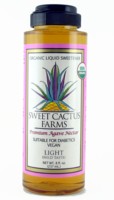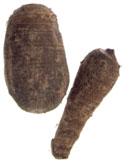This is a very versatile flour mix. You can make many different baked goods using it. All start with the basic dry mixture.
BLOG UPDATE: Note, these are some of my first basic recipes. They are simple and crude. Yet, they are enough to get started and get cooking. If you're looking for something else, browse my blog for some of my newer bread and cookie recipes, like
Lindsay's Bread or my
All-purpose cookie mix. On this page, however, the Basic dry mix below is very versatile and can be used as a foundation for just about anything.
Basic dry mix-------------
1/2 cup chickpea flour
1/2 cup tapioca flour
1/2 cup potato starch
2 tbsp sugar
3 tsp egg replacer powder(Ener-G)
2 tsp xanthan gum
2 tsp baking powder
1 tsp sea salt
1 - Dinner rollsAdd:1/2 cup canola oil
1/2 cup water
Mix dry ingredients. Add oil and water. Beat with blender. Using WET hands, form circles and place on ungreased cookie sheet or in muffin tins. Bake at 400 for 15 minutes.
2 - Pie crust(leave out baking powder)
Add:1/2 cup canola oil
1/3-1/2 cup water
Mix dry ingredients. Add oil. Beat with blender. Add 1/3 cup water and mix. If too crumbly, add 1 tbsp at a time until less crumbly and able to be pressed without cracking. Press dough into greased pie plate. Bake 1 minute at 450. Then make pie as instructed.
3 - Meat or veggie wrap(leave out baking powder)Add:1/4 cup canola oil
1/2 cup water
Mix dry ingredients. Add oil and water. Beat with blender until workable dough forms. Add a tablespoon or two more flour if necessary. Cut dough into four portions. Roll each out, one at a time, on floured surface. Slice each into two pieces and place meat or veggies on closest edge. Wet the edge with water, then roll up the filling in two complete rotations. Slice off extra dough. Wet edge with water. Place edge side down on greased cookie sheet. Brush tops with oil and salt. Bake at 400 for 10 minutes.
4 - Cinnamon cookiesSame as #3 (add 1 tsp baking powder)Roll out entire dough and end with the longest section being the width in front of you. Brush with canola oil. Sprinkle with cinnamon and generous amount of sugar. Roll up. Seal edge with water. Brush top with oil and sugar. Cut into 1/2 wide cookies. Place on greased cookie sheet and bake for 5-10 minutes at 400.
5 - Crackers (like saltines)Same as #3. (Leave out baking powder)Roll out entire dough into a near-square shape. Brush top with oil and sprinkle with sea salt. Use a pizza cutter to cut rows both ways. Prick crackers with a fork. Bake at 400 for 10 minutes on greased cookie sheet.
- variation: add onion or garlic powder to the dough.
6 - PancakesDo NOT use the entire dry mix recipe above. Use 1 cup of the gf flours (1/3 tapioca, 1/3 potato starch, 1/3 chickpea). Add 2 tbsp sugar, 1 tsp salt, 2 tsp baking powder and mix with 2 tbsp oil and 1/3-1/2 cup water. Pour batter 1-2 tbsp at a time onto hot nonstick pan with 1 tsp oil on it.
7 - BagelsSame as #1.Add 1/2 canola oil
1/2 cup water
Add 1 cup extra flour mix (tapioca, potato starch, chickpea) to the recipe. Heat broiler on high, set rack two rungs down. Boil pan full of water on stove top. Grease a cookie sheet with Spectrum shortening. On a floured surface, with floured hands, roll a ping pong sized ball of dough between hands until smooth. With a floured finger, poke hole through middle. With dough still around finger, smooth the dough on the bottom that's disturbed from the poking, then pull off. Repeat for all. Place on sheet. Broil small bagels for 2 mins then flip and broil another 2 mins. Watch closely. They should lightly brown on top but not burn. This will happen quickly. Repeat for all. Place bagels in boiling water for 2 mins then flip and another 2 mins. Meanwhile, turn off broiler and heat oven to 350. Place bagels on paper towel while doing the rest. Put bagels on cookie sheet and bake at 350 for 15 mins for smaller sized and 20-30 mins for larger, depending on size.
Here's an optional recipe that also works: Mix 1 cup gf flour, 2 tbsp sugar, 2 tsp baking powder, 2 tsp xanthan gum and 1/3 cup water. Then, follow same directions as above. The difference between the recipes is this: recipe 2 is a little chewier like a real bagel and recipe 1 looks more like a real bagel. Both are good and my kids will eat both. Try both out and take your pick.
Enjoy.














